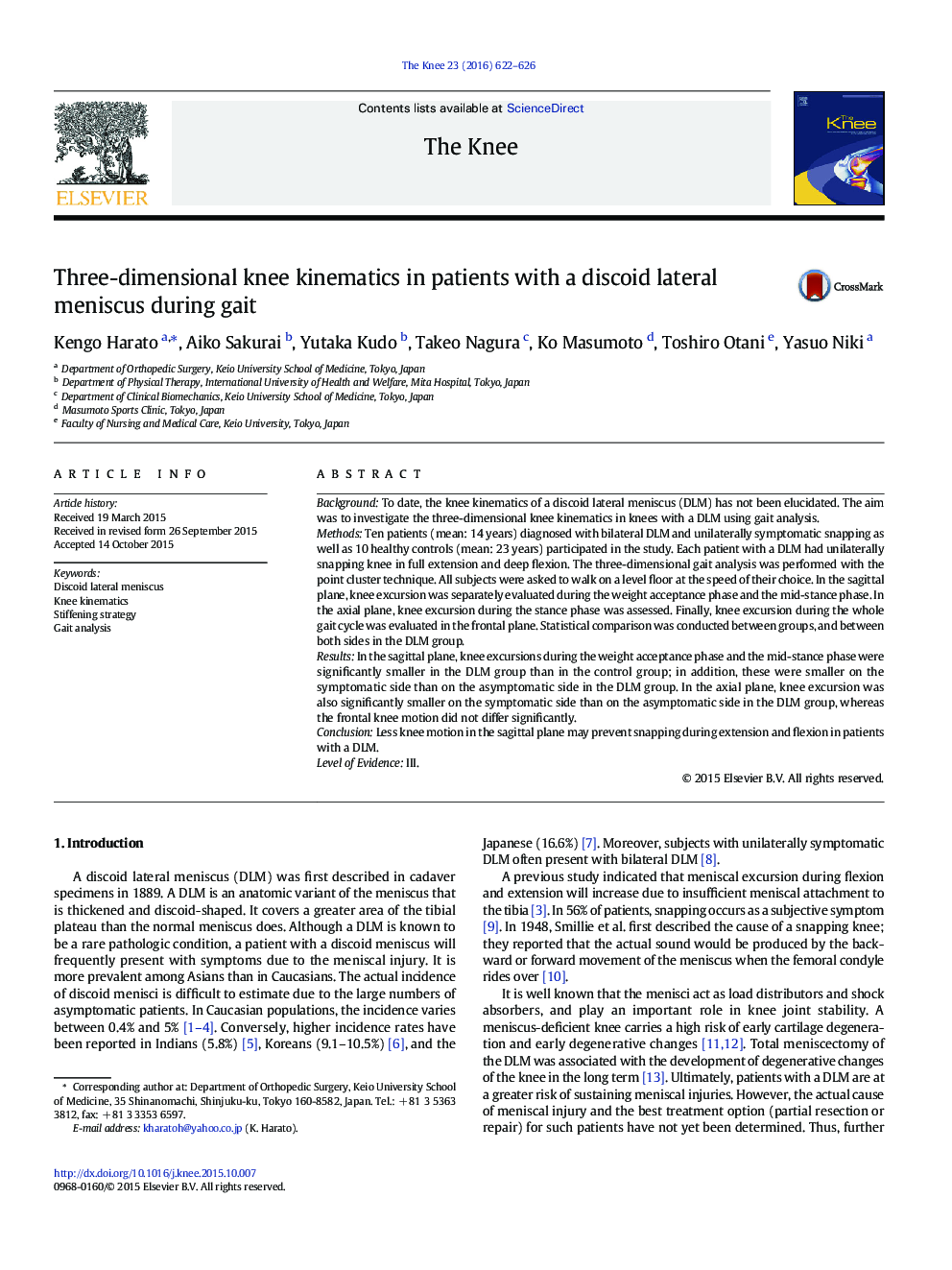| Article ID | Journal | Published Year | Pages | File Type |
|---|---|---|---|---|
| 4077151 | The Knee | 2016 | 5 Pages |
•Gait was analyzed to assess the three-dimensional (3D) knee kinematics in patients with discoid lateral meniscus (DLM).•・A total of 20 knees in 10 patients with unilaterally symptomatic DLM were examined.•The 3D kinematics was compared between DLM with and without symptoms.•Less knee motion in the sagittal plane was seen during gait in knees with DLM.•The motion was more obvious on the symptomatic side than on the asymptomatic side.
BackgroundTo date, the knee kinematics of a discoid lateral meniscus (DLM) has not been elucidated. The aim was to investigate the three-dimensional knee kinematics in knees with a DLM using gait analysis.MethodsTen patients (mean: 14 years) diagnosed with bilateral DLM and unilaterally symptomatic snapping as well as 10 healthy controls (mean: 23 years) participated in the study. Each patient with a DLM had unilaterally snapping knee in full extension and deep flexion. The three-dimensional gait analysis was performed with the point cluster technique. All subjects were asked to walk on a level floor at the speed of their choice. In the sagittal plane, knee excursion was separately evaluated during the weight acceptance phase and the mid-stance phase. In the axial plane, knee excursion during the stance phase was assessed. Finally, knee excursion during the whole gait cycle was evaluated in the frontal plane. Statistical comparison was conducted between groups, and between both sides in the DLM group.ResultsIn the sagittal plane, knee excursions during the weight acceptance phase and the mid-stance phase were significantly smaller in the DLM group than in the control group; in addition, these were smaller on the symptomatic side than on the asymptomatic side in the DLM group. In the axial plane, knee excursion was also significantly smaller on the symptomatic side than on the asymptomatic side in the DLM group, whereas the frontal knee motion did not differ significantly.ConclusionLess knee motion in the sagittal plane may prevent snapping during extension and flexion in patients with a DLM.Level of EvidenceIII.
